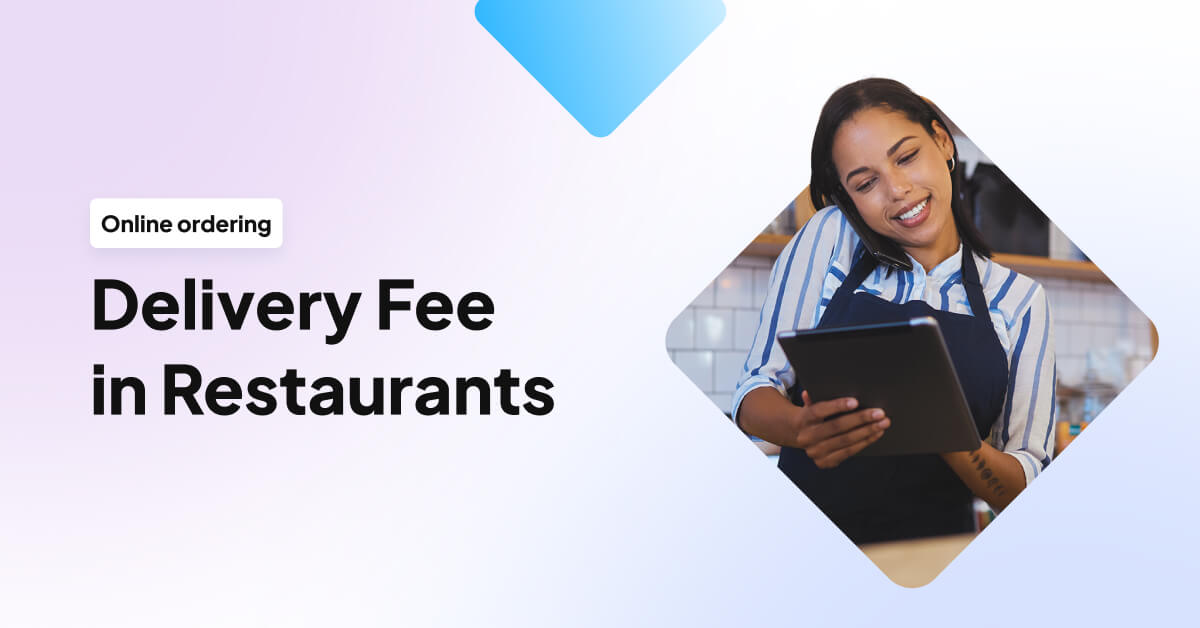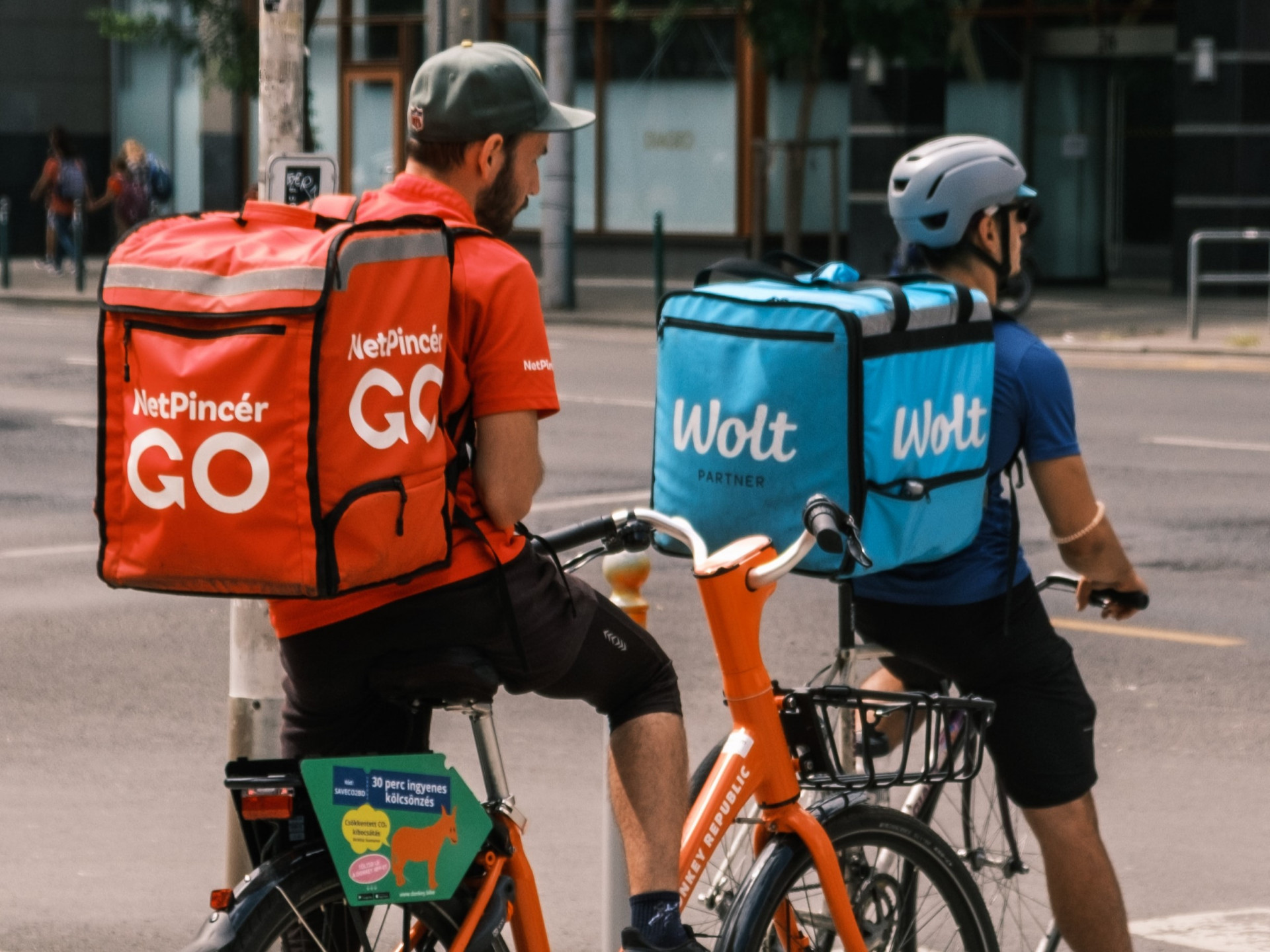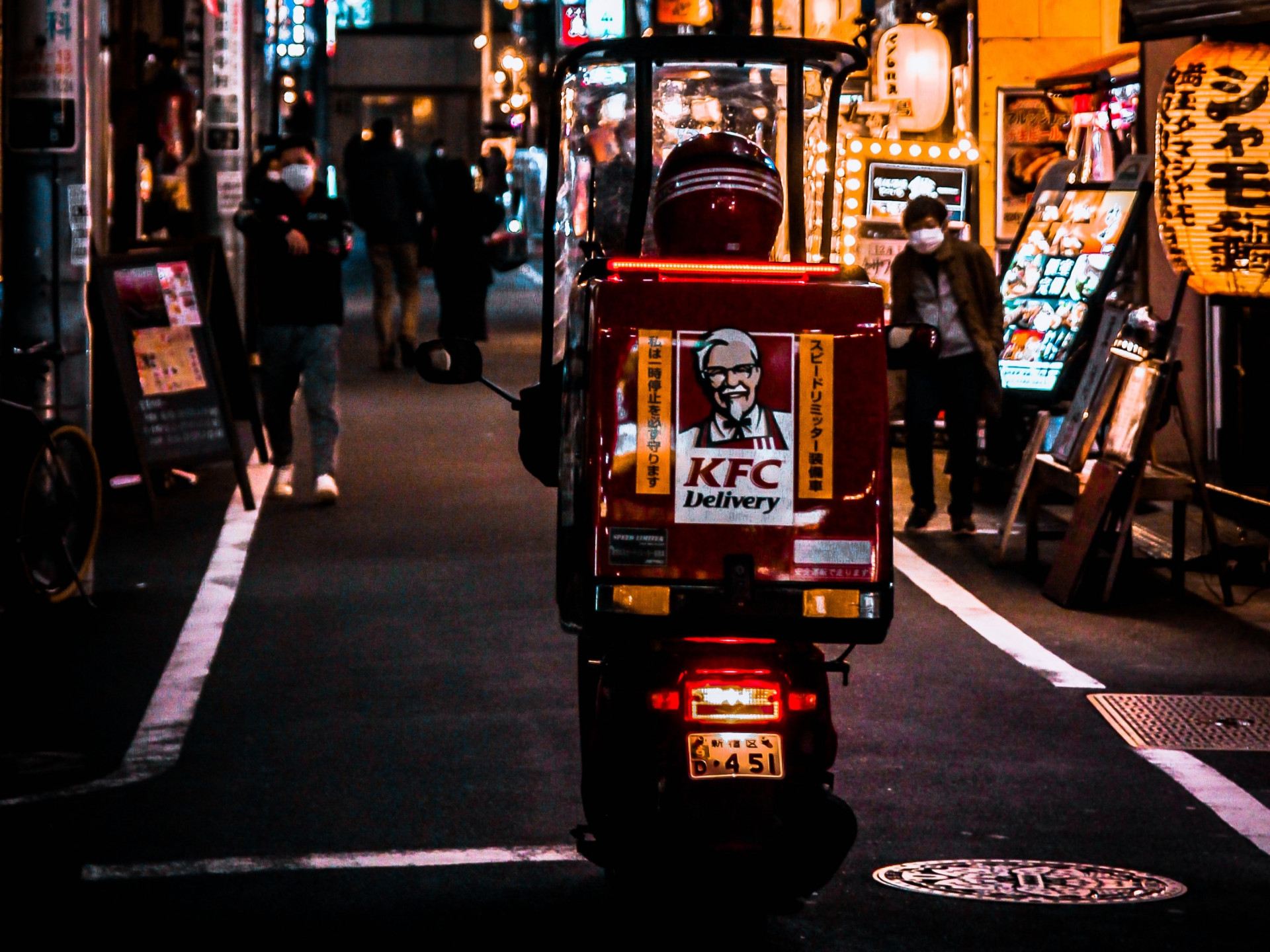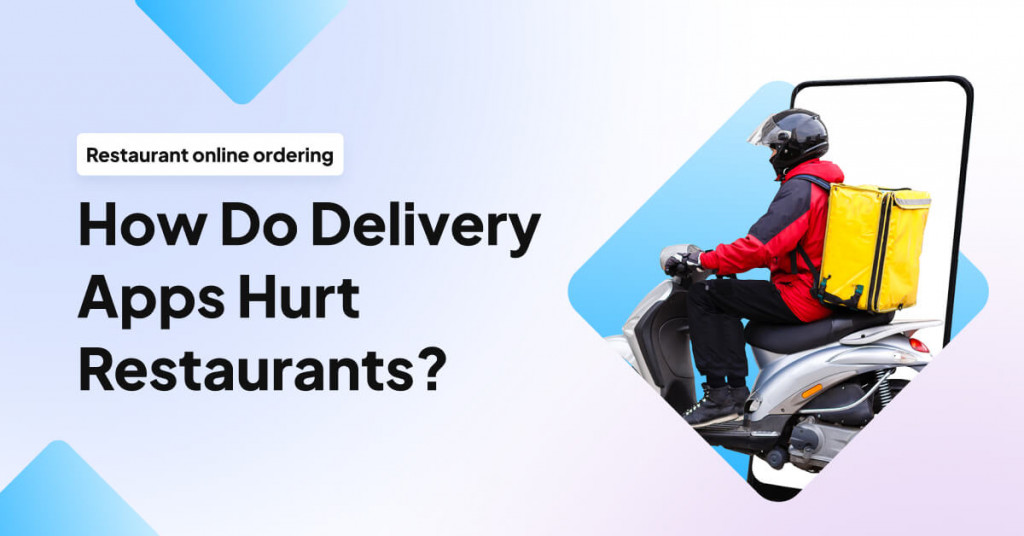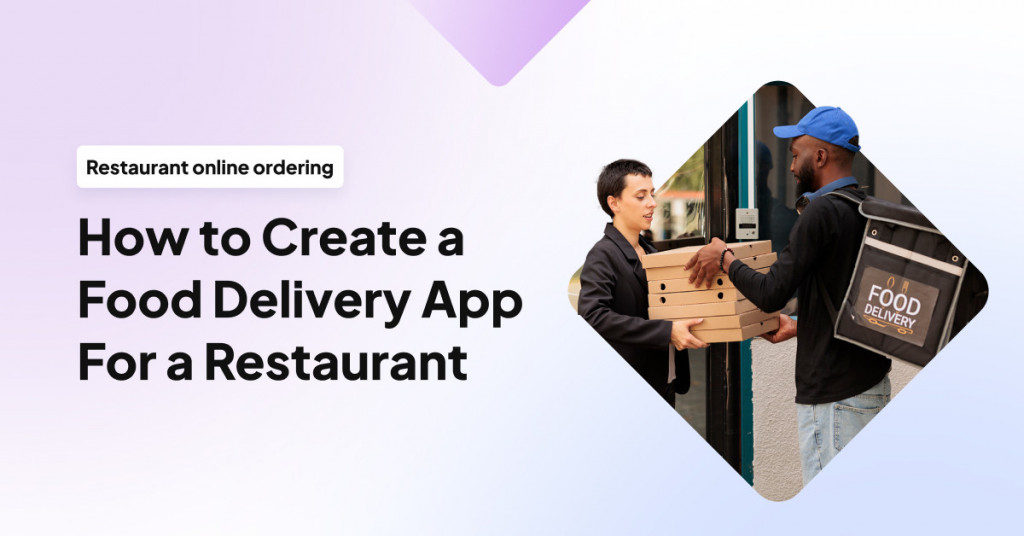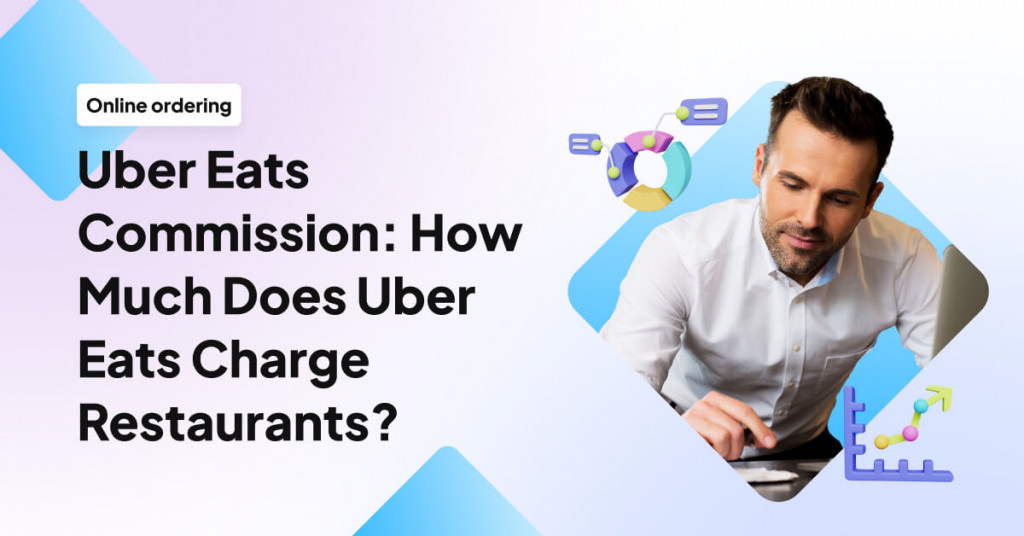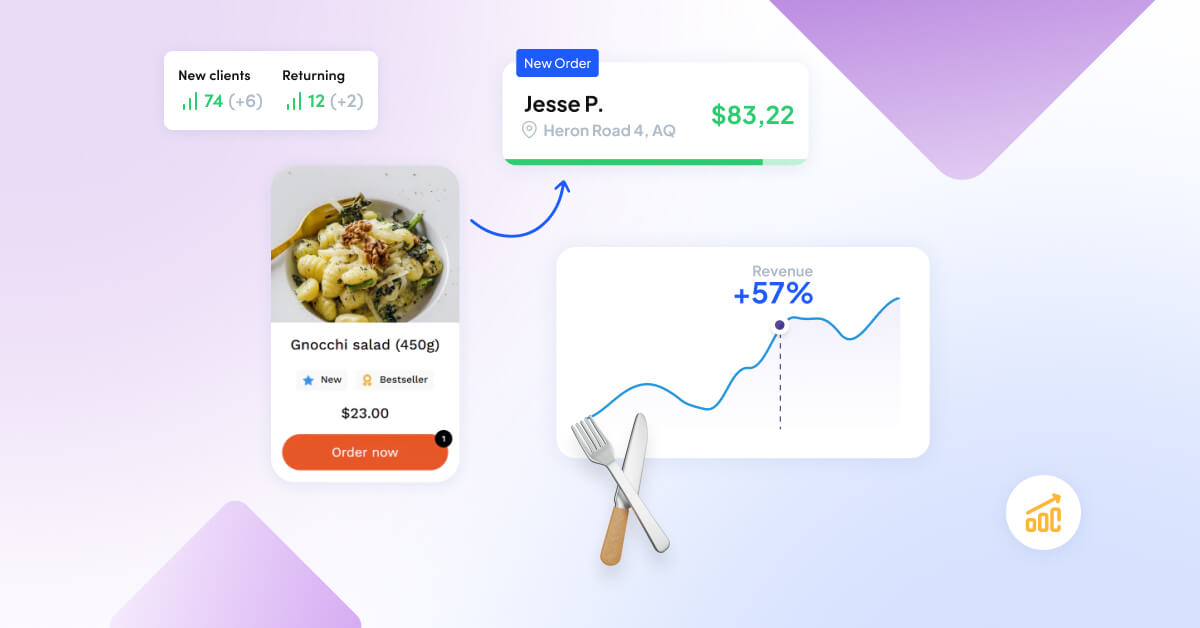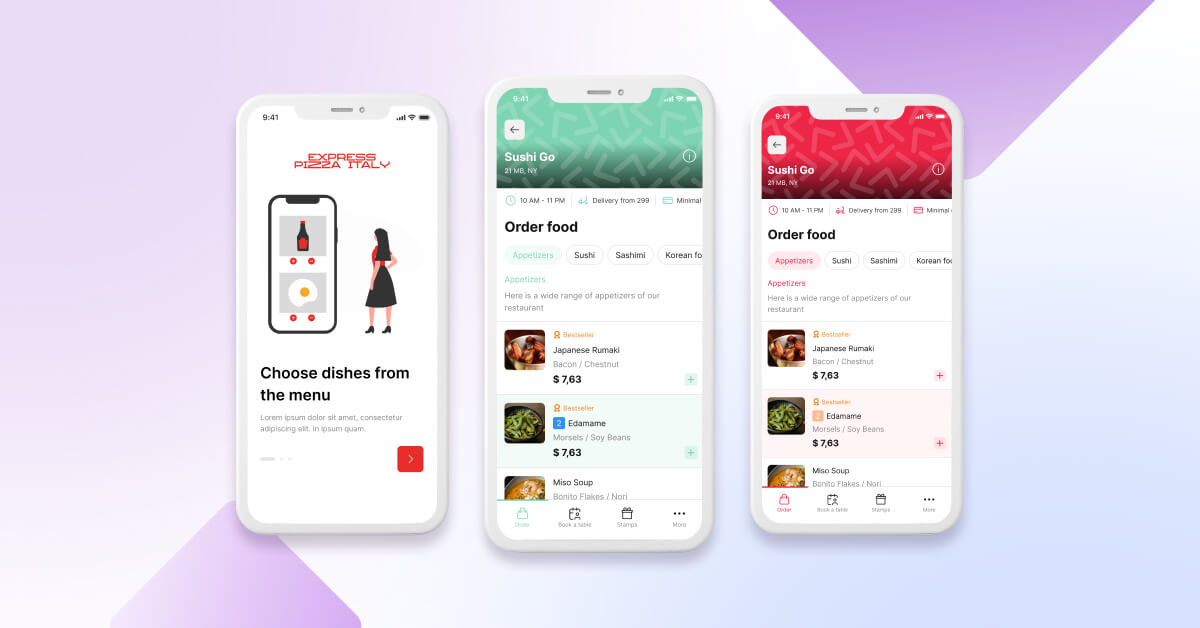Ever since the globalization of third-party delivery services like Uber Eats and GrubHub, restaurant owners have been forced to decide between switching to a new delivery model and paying outrageous delivery fees and sticking to the old ways to avoid additional fees.
In this entry, we’re going to go through all the essentials regarding delivery fees for restaurants.
We’re going to answer the following:
- What is a Restaurant Delivery Fee?
- What are the main restaurant delivery options?
- What are the best third-party delivery app alternatives?
- How to reduce restaurant delivery costs & regain control?
Whether you’re just considering starting a restaurant business or are simply looking to find out if you’re overpaying for your delivery services, we’ve got you covered.
What Is a Delivery Fee – Restaurant Delivery Facts
A delivery fee is a charge that is added to the total cost of an order when a third-party delivery service, such as Uber Eats, delivers the goods on your behalf.
This fee is intended to help the third-party cover the costs associated with delivering your order, such as fuel, vehicle maintenance, and driver compensation.
And that’s completely normal. Fees are a natural way of covering operating costs. That said, many restaurant owners have noticed that, at one point, the commissions that food delivery apps charge them have gone slightly out of control.
More and more restaurant business owners have been considering whether third-party apps are actually necessary for them to stay in the game. And that’s no surprise, considering that some food delivery companies charge well over 30% of each order in commissions.
Below are some important restaurant delivery fee facts and data that restaurant owners should be aware of:
- Direct ordering: Over 70% of customers prefer to order directly from the restaurant rather than a third-party delivery system like Uber Eats or GrubHub.
- Service fees: Third-party service fees can range from 15-30% (and more) of the total order value.
- Delivery fees: Delivery fees charged by restaurants or delivery services typically range from $2 to $5, although some restaurants may charge higher fees for longer distances or during peak hours.
- Customer expectations: 85% of consumers expect their food to arrive in 30 minutes or less when ordering delivery.
- Impact on revenue: According to a recent survey, restaurants that offer delivery services can increase their revenue by up to 30%.
- Competition: Large global players such as Uber Eats and DoorDash dominate the market and tend to outcompete smaller local delivery services. This allows them to have a monopoly in the food delivery industry.
Delivery Alternatives for Restaurants: What Delivery Options Do Restaurants Have?
There are three main restaurant delivery options.
The most popular are third-party delivery services like Uber Eats or GrubHub. These services make it possible for restaurants to sell food without building an online ordering system or hiring delivery drivers. This is a very tempting offer, especially for new restaurant owners who are overwhelmed when just starting out.
Unfortunately, these are also some of the most expensive options charging well over 30% in commissions. As many restaurant owners are now finding out, fees as high as this can prove rather deadly in the long term.
Due to high third-party fees, many restaurant owners are returning to building their own ordering systems and delivery teams. First-party delivery (also known as in-house delivery) is where all the aspects of the delivery process are managed by the restaurant, including ordering, employee training, salaries, benefits, and more.
One of the growing alternatives to both the third and the in-house delivery systems is a solution that takes the best out of both worlds. An in-house ordering system with on-demand delivery is similar to in-house delivery, except you just manage your ordering system and hire local independent contractors to deliver your food for a flat fee per order.
This approach allows you to have more control over your business and helps you avoid having to pay extreme commissions to third-party services and hiring and training your own delivery people.
Let’s take a closer look at each option and see what best matches your needs.
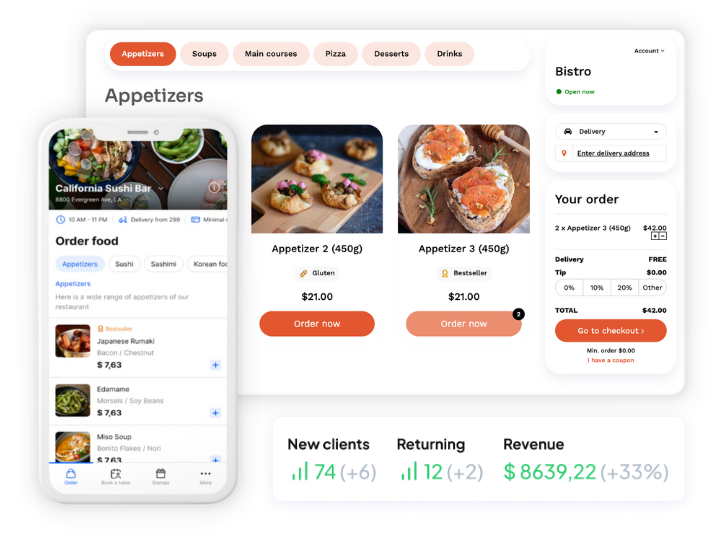
1. Third-Party Delivery Fee for Restaurants
Third-party delivery services refer to companies like Uber Eats, Grubhub, DoorDash, and Postmates, which offer a platform for restaurants to receive orders and dispatch delivery.
These third-party delivery services handle all aspects of the delivery process, including customer support, delivery logistics, and restaurant payment processing, in exchange for commission fees that range from 15 to more than 30 percent of the total order value.
By using third-party delivery services, restaurants can reach a wider audience, have a more convenient option for delivery, and avoid most of the upfront costs associated with in-house delivery services.
However, restaurants may have less control over the delivery process and face challenges maintaining their brand identity.
Third-party delivery services pros and cons
-
Pros:
- Increased exposure: Third-party delivery services can expand a restaurant's reach by allowing it to reach new customers who may not have otherwise known about the restaurant.
- Convenience: Third-party delivery services handle all aspects of the delivery process, from accepting orders to dispatching drivers, which can be convenient for restaurants that do not have the resources to manage their own delivery operations.
- No upfront costs: Because third-party delivery services charge commission fees on each order, they usually charge no upfront costs for restaurants to use these services.
-
Cons:
- Extreme commission fees: Commission fees charged by third-party delivery services can range from 15 to well over 30 percent of the total order value. This can be deadly in the long run as your business grows.
- Lack of control: Restaurants that use third-party delivery services have less control over the delivery process, including the quality of service provided by drivers and the ability to resolve customer issues in a timely manner.
- Brand dilution: Because orders are placed through the third-party delivery platform, restaurants may have less control over the branding and marketing of their own delivery services.
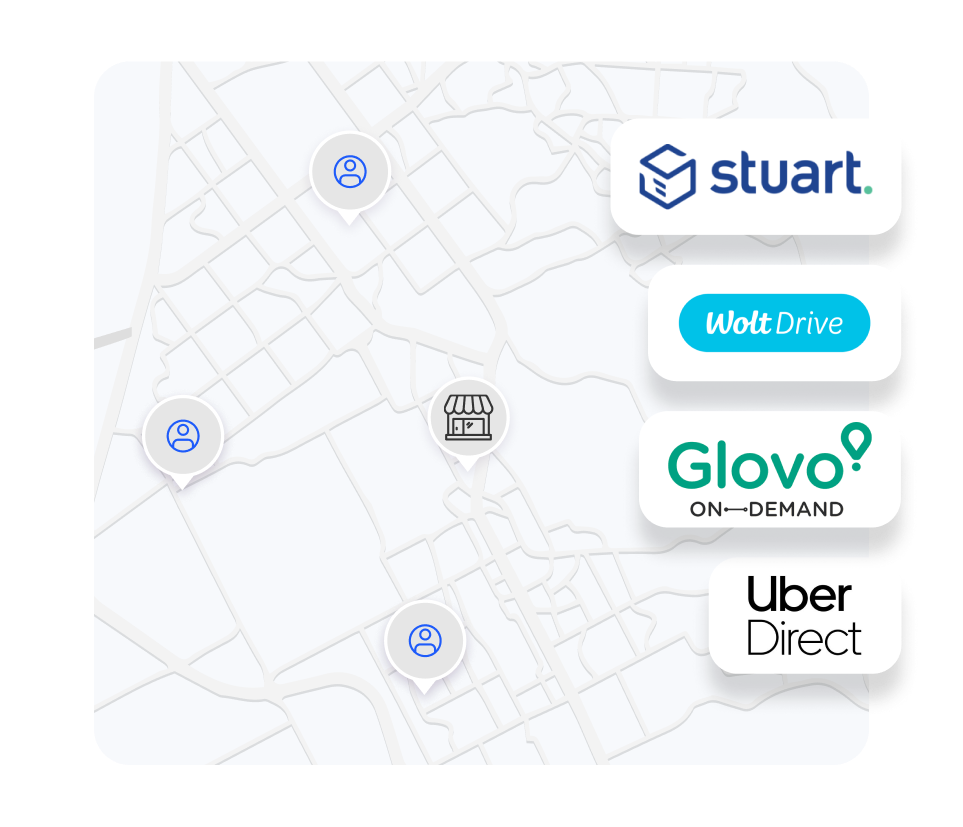
2. In-House Delivery Fee for Restaurants
In-house delivery service manages all aspects of the delivery process, from accepting orders to dispatching drivers already in place.
This also requires the restaurant to hire and train delivery drivers, purchase delivery vehicles, and manage delivery routes using restaurant delivery software. It’s an all-encompassing solution for restaurants.
By offering in-house delivery services, restaurants can have more control over the quality of delivery service, maintain their brand identity, and save on commission fees charged by third-party delivery services. However, this option requires a bigger investment upfront.
In-house delivery services pros and cons
-
Pros:
- Increased control: Restaurants that operate their own delivery services have more control over the delivery process, including the ability to ensure timely delivery and resolve customer issues in real time.
- Increased branding: Because orders are placed directly through the restaurant's own platform, first-party delivery services can help maintain a restaurant's brand identity and improve customer loyalty.
- Reduced costs: First-party delivery services are more cost-effective for restaurants in the long run, as they allow restaurants to avoid paying high commission fees charged by third-party delivery services.
-
Cons:
- Upfront costs: Restaurants that operate their own delivery services must bear the upfront costs associated with hiring and training delivery drivers, purchasing delivery vehicles, and managing delivery routes.
- Logistics: Managing your own delivery service can be complex and time-consuming, requiring significant resources to manage delivery schedules, dispatch drivers, and track orders.
- Limited exposure: First-party delivery services are limited to a restaurant's existing customer base, which may make it more difficult to attract new customers.
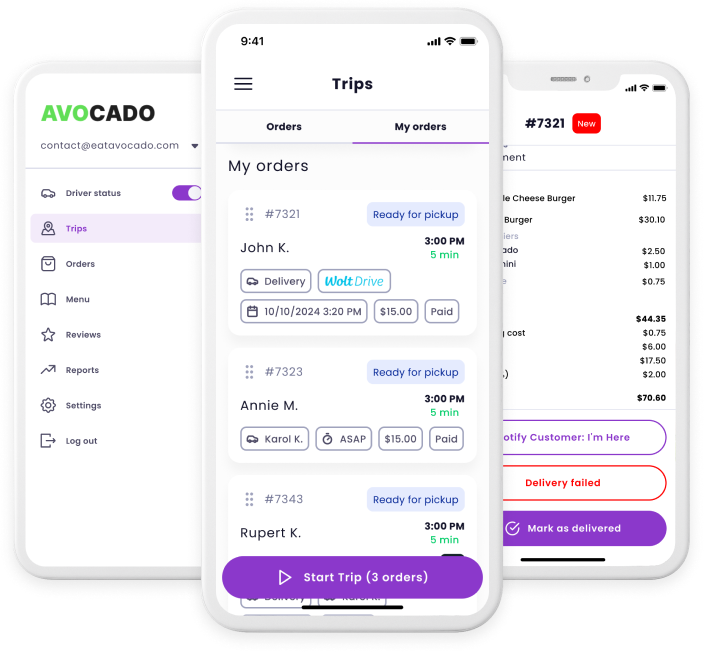
You can save on upfront costs associated with building your own online ordering system by using a dedicated restaurant app builder.
Moreover, saving over 30 percent on fees puts you in place of control. If you prosper wisely, you can offset the costs of hiring and training delivery drivers, purchasing delivery vehicles, and managing delivery routes.
3. In-house ordering system with on-demand delivery – Delivery Fee and More


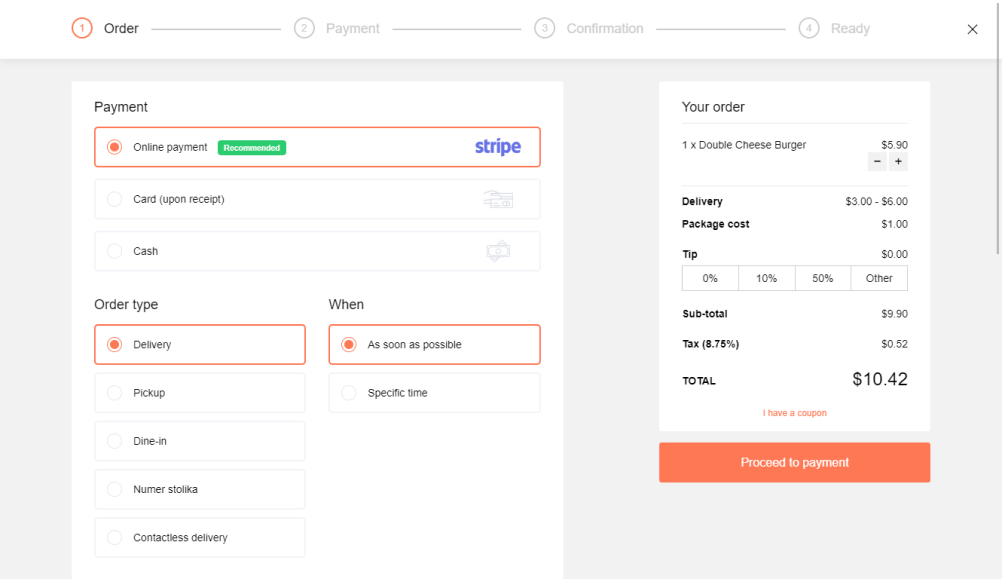
An in-house ordering system with on-demand delivery is when you have your own online ordering system integrated with a local delivery service that best suits your needs.
This means that just like the regular in-house ordering system, the restaurant manages the online ordering process. The difference is that the actual delivery of the food is handled by an on-demand delivery service. That way, you don’t have to worry about training and maintaining a team of delivery drivers.
The biggest challenge of this approach can be the upfront costs that are associated with website and app development. However, there are dedicated tools like UpMenu that will help you launch your online ordering system without you having to code or pay for a website or app development.
In-house ordering platform with on-demand delivery pros and cons
-
Pros:
- Control: Restaurants have more control over their brand, menu engineering, and customer experience.
- Customer data: Restaurants have access to valuable customer data, which they can use to personalize marketing messages and improve their overall customer experience.
- Increased revenue: Restaurants can save well over 30% in commissions which they can use to market their brand and increase revenue.
- No upfront costs: Because third-party delivery services charge commission fees on each order, they usually charge no upfront costs for restaurants to use these services.
-
Cons:
- Logistics: While an in-house ordering system is basically cost-free, you will still need to pay your delivery service the established rate. That said, you will have more control over the rates and terms in the contract.
The biggest upfront investments you will be facing are likely Web and app development. Restaurants that do not have access to a restaurant website builder are going to have to pay quite an amount for a properly functioning restaurant website.
Similarly, building a mobile app for restaurants can get very costly if restaurateurs do not have access to a dedicated restaurant app builder or related tools.

Why Is Food Delivery so Expensive? How Much to Charge Your Customers?
High delivery fees impact customers as much as they impact restaurateurs. Extensive delivery fees may deter some customers from ordering from a restaurant, especially if there are other options available with lower delivery fees.
If a restaurant charges fees that are significantly higher than the competition’s, it’s likely to receive fewer orders than if it were to offer cheaper or free delivery. That’s why over 70% of customers prefer to order directly from the restaurant rather than a third-party delivery system like Uber Eats or GrubHub. So, how much does Uber Eats charge restaurants? Find out below.
Restaurant Delivery Fees 2025
| Food Delivery App | Commission |
|---|---|
| Your Own App | 0% |
| DoorDash | 15-30% delivery fee 6% pickup fee |
| UberEats | 15-30% delivery fee 6% pickup fee |
| GrubHub | 15-30% service fee 10% delivery fee |
| Postmates | 15-30% service fee 0.80% up to $5.00 direct deposit fee |
Ultimately, the impact of delivery fees on customer behavior will depend on the specific restaurant and market conditions. It’s safe to say, however, that both customers and restaurant owners are finding third-party commissions increasingly burdensome.
By investing more effort upfront and preparing your own restaurant mobile app, you can save a lot of money you’d have to pay in fees in the long run. You can now do so using a dedicated restaurant app builder that’s not only very easy to use but is a lot cheaper than developing an app from scratch.
What Do Restaurant Delivery Fees Cover?
As you’ve already learned, delivery fees will differ depending on whether you use your own online ordering system or third-party delivery service. The specific expenses that delivery fees cover can vary depending on the business and the delivery service used.
Delivery fees cover:
- Driver compensation: Delivery fees help cover the cost of paying delivery drivers, including wages and any additional compensation, such as mileage or delivery bonuses.
- Vehicle maintenance and fuel: Delivery fees may also help cover the cost of maintaining delivery vehicles, including fuel, repairs, and maintenance.
- Restaurant Insurance: Delivery services may also be required to carry additional insurance coverage for their drivers and vehicles, which can be reflected in the delivery fees.
- Technology and support: Many delivery services use technology platforms to manage orders, dispatch drivers, and provide customer support. Delivery fees may help cover the cost of developing and maintaining these platforms.
- Administration and overhead: Finally, delivery fees may also help cover the administrative and overhead costs associated with running a delivery service or managing a restaurant’s delivery operations.
By establishing your own online ordering system and hiring local food delivery services, you can use the money you have saved on third-party app commissions to launch targeted marketing campaigns or offer cheaper delivery.
How to Reduce Delivery Fees?
If you’re a restaurant owner considering switching to an Uber Eats alternative or another third-party delivery service, you can reduce your overall delivery fees by negotiating with different delivery services or offering in-house delivery options.
However, it’s important to carefully consider the costs and benefits of each option before making a decision, as switching delivery services or implementing in-house delivery can involve additional costs and logistics.
Here are some ways that can help you reduce delivery and service fees
- Negotiate with delivery services: Restaurant owners can negotiate with delivery services to lower the commission fees they charge for each order placed through their platform. By offering volume discounts or other incentives, restaurants may be able to reduce their overall delivery costs.
- Offer delivery-only specials: Offering discounts or promotions for delivery-only orders can incentivize customers to order more frequently and increase the overall volume of orders, which can help offset delivery fees.
- Use an in-house ordering system with on-demand delivery: One of the best options is to have your own online ordering system and hire third-party contractors to deliver your food for a flat fee per order. That way, you avoid high third-party delivery fees, which can help you cut delivery costs.
- Offer pickup incentives: Encouraging customers to pick up their orders can help reduce the overall cost of delivery fees. Restaurants can offer pickup-only specials or discounts to incentivize customers to pick up their orders.
- Implement a delivery fee structure: By implementing a tiered delivery fee structure based on distance or order size, you can better align the delivery costs with the actual cost of providing the service. This can help ensure that delivery fees are fair and reasonable so that your customers don’t feel cheated.
Establishing your own online ordering system might seem like a challenge. There are, however, services dedicated to helping you do just that and for a flat fee, freeing you from outrageous long-term contracts and commissions.
In the long run, owning your delivery website and app will keep you in control of your business and help you save a lot of money you’d have to otherwise pay in commissions.
Key Takeaways
- Restaurant promotions are a great way to entertain your loyal customers and bring new traffic to your restaurant.
- Some of the best restaurant promotions include engaging your customer audience in a fun, approachable manner.
- You should always keep your restaurant and your target customers in mind when picking a restaurant promotion
- Being consistent with your promotions is a good way to keep your customers engaged.
- A strong online presence is key to a successful online restaurant promotion campaign.
- Creating a schedule can help you remain consistent with your restaurant promotion campaigns.
- 5 ways you can increase delivery sales: If you’re a restaurant owner looking to optimize your delivery services, make sure to check out these 5 tips on how to increase food delivery sales
Frequently Asked Questions (FAQ)
What Are the Average Restaurant Delivery Fees?
The average delivery fee for restaurants can vary depending on the specific restaurant, location, and delivery service used. However, as a general guideline, restaurant delivery fees typically range from $2 to $5, although some restaurants may charge higher fees for longer distances or during peak hours.
How Much Is DoorDash Delivery Fee?
DoorDash charges a 15-30% delivery and a 6% pickup fee. If, like most restaurants, you are looking to save money on fees, you might want to consider trying DoorDash alternatives that are commission-free.
How Much Is Uber Eats Delivery Fee?
Uber charges a 15-30% delivery and a 6% pickup fee. If, like most restaurants, you are looking to save money on fees, you might want to consider uber eats alternatives that are commission-free. If you decide to use this service, you might want to better understand how to get more Uber Eats orders.
Why Are Uber Eats Delivery Fees So High?
Uber Eats charges participating restaurants more money than most other restaurant delivery services. Below are the costs linked to these food orders.
- Delivery fees: Uber Eats charges a delivery fee for each order, which is intended to cover the cost of delivery and driver compensation. These fees can vary depending on the distance between the restaurant and the customer’s location.
- Service fees: In addition to delivery fees, Uber Eats also charges a service fee for each order. This fee helps cover the costs associated with maintaining the Uber Eats platform and providing customer support.
- Surge pricing: During periods of high demand, such as peak meal times or bad weather, Uber Eats may implement surge pricing. This means that the delivery fee and service fee may be higher than normal to incentivize more drivers to deliver orders.
- Restaurant commissions: Finally, Uber Eats also charges restaurants a commission fee for each order placed through the platform. This fee can vary depending on the specific agreement between the restaurant and Uber Eats, but it typically ranges from 15-30% of the total order value. This is one of the reasons why so many restaurants are considering switching to in-house delivery.
- How to avoid high Uber Eats fees: An alternative to Uber Eats could be establishing your own online ordering system and paying a flat fee for each delivery.
Who Has the Cheapest Delivery Fee?
All third-party restaurant delivery services charge similar commissions, with only slight variations. If you really want to save money on commissions, you should consider building your own online ordering system using simple codeless tools. Below are the fees of the most popular food delivery services.
- Your Own App: 0% (commission-free)
- DoorDash: 15-30% delivery fee, 6% pickup fee
- UberEats: 15-30% delivery fee, 6% pickup fee
- GrubHub: 15-30% service fee, 10% delivery fee
- Postmates: 15-30% service fee, 0.80% (up to $5.00) direct deposit fee

